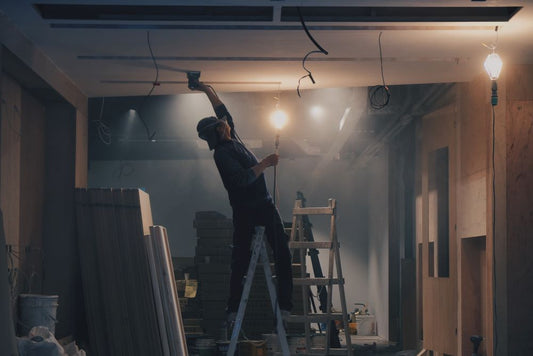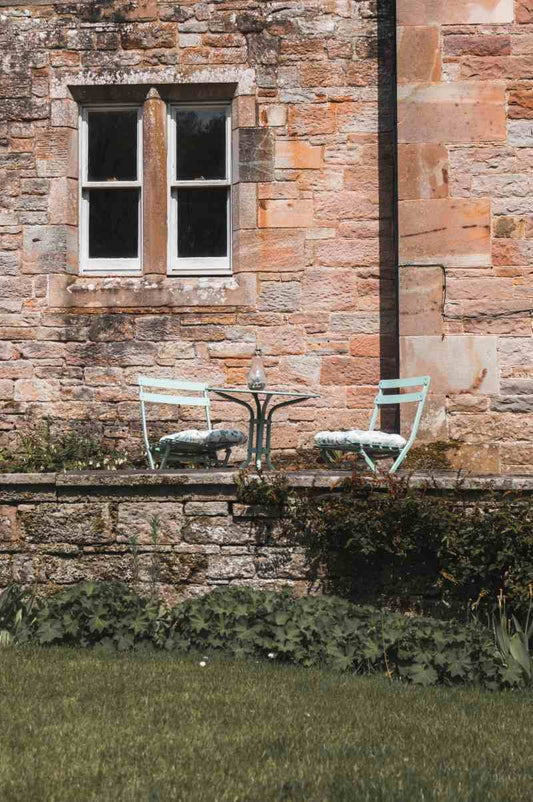Time takes its toll on everything. Even the most beautiful brick walls age over time and begin to show it. After a while, you may see areas of your brick wall that need upgrading or replacing.
The good news is that you do not have to tear that older wall down and replace it with a new one. You can repair bad brickwork but you will have to identify the age of the mortar.
Pre-World War 2 mortar was a mixture of lime putty and sand. If you use modern mortar to re-point the wall, then the brick and mortar may break quicker than you would want. You need to match the old mortar to make sure you do not waste your work.
How To Get The Most Out Of Your Bricklaying Experience
The best way to get the most out of your bricklaying experience, if you are a beginner, is to enter a top apprenticeship. This is a job for those people who like working with their hands.
Bricklaying is a hands-on profession that takes a lot of skill. Once you have mastered those skills then you will begin to appreciate the work more. Another way to get the most out of bricklaying is to enjoy seeing your work come to life.
That life is seen in the strong foundations, walls, and buildings you put together. This is hard work but it is a very rewarding career if you have those two prerequisites.
How To Fix Common Brickwork Problems
When an individual chimney brick is cracked, it is better to replace it than repair it. These cracks can be the result of extreme temperature changes or the foundation was not constructed correctly and a lot of shifting has taken place.
If it is the latter source, you will still need to replace the cracked bricks, and then address the source of the problem. Another common problem is re-pointing.
This is where you have to renew the older mortar. You do this by cutting out the old mortar with a crack chaser blade on an angle grinder. Once the old loose mortar is removed to the firm mortar level, you fill the gaps with new mortar.
Common Bricklaying Problems And How To Solve Them
Tuckpointing is when you have two different mortar colours. One colour is the colour of the brick while the other colour shows a thin tracer that gives the illusion of a narrow joint. The solution is to re-point the wall.
Brick spalling is another common problem that requires you to remove the bad brick and replace it. Don’t forget to remove the mortar around these bricks. Use a masonry sealer to prevent water and weather damage.
Sandstone erosion also is common in some areas and the removal of the worn bricks is essential. Then replace the old mortar surrounding the affected area. Finally, algae growth is a common problem in some wetter regions of the country.
The solution to algae growth is to clean the brick with water and the appropriate cleaner. Then spray a hydrophobic sealer over the brick wall
What Are The Common Defects In Brick Masonry?
- Over-burning of the bricks- The bricks lose their shape as well as their required components
- Under burning of the bricks- This is where the brick does not complete vitrification and the bricks remain hard and the pores remain open
- Brick bloating- This is a situation where the brick has excess carbon material and sulfur
- Black core- This is due to insufficient burning
- Efflorescence- Caused by the presence of alkalis
What Are The Defects In Brick Masonry?
- Cracking- There are numerous sources for this problem. Shrinkage, settlement, and thermal expansion and contraction are the main sources and the size of cracks will range from minor surface cracks to dangerous deep cracks.
- Bulging- Is caused by improper construction, moisture infiltration, or frost heave. This condition can severely damage a building if not addressed quickly
- Spalling- Is caused by freeze-thaw cycles, moisture infiltration, or chemicals. You will see flaking and chipping on the surface of the brick.
What Are Ways Brickwork Can Fail?
- Settling- The weight of the building will always cause some settling of the foundation. However, too much settling with a brick building can damage the brick wall by breaking the bond of the mortar and brick. Too much settling can cause a wall to crumble and fall.
- Water damage- When water is allowed to drain onto the foundation it can weaken it. Then when winter comes, the frost further damages the foundation and the wall.
- Poor flashing- Flashing is needed to help drain water away from the mortar and the wall. If it is not placed correctly the water, moisture and even frost can weaken the brick to a point where it will collapse.
How Do You Know When A Brick Needs To Be Replaced?
A visual inspection will help you spot some of the signs. If you see cracks in the brick or mortar, it is best to replace the bricks or the mortar before the cracks get too severe. The next visual sign will be the condition of the brick.
If you see flaking or chipping, then it is time to consider replacing the worn-out bricks with new ones. Other signs that your brickwork needs to be replaced are indirect signs.
Your floors could be uneven, and windows and doors do not close or open like they used to. Or you have cracks in your driveway or basement.
Some Additional Words
Correcting bad brickwork depends on the condition that is causing the deterioration of your brick wall. The best thing to do when you see some discolouration or cracks in your brickwork is to call in a professional bricklayer to investigate the extent of the damage.
Once you get his recommendation, then you will know how you should proceed to repair the damage. Some fixes are easier than others but repairs are needed to make sure your building or wall continues to stand.
When you need to do any brickwork, visit our website. We have the perfect bricklaying tool for you to use, at an affordable price.




